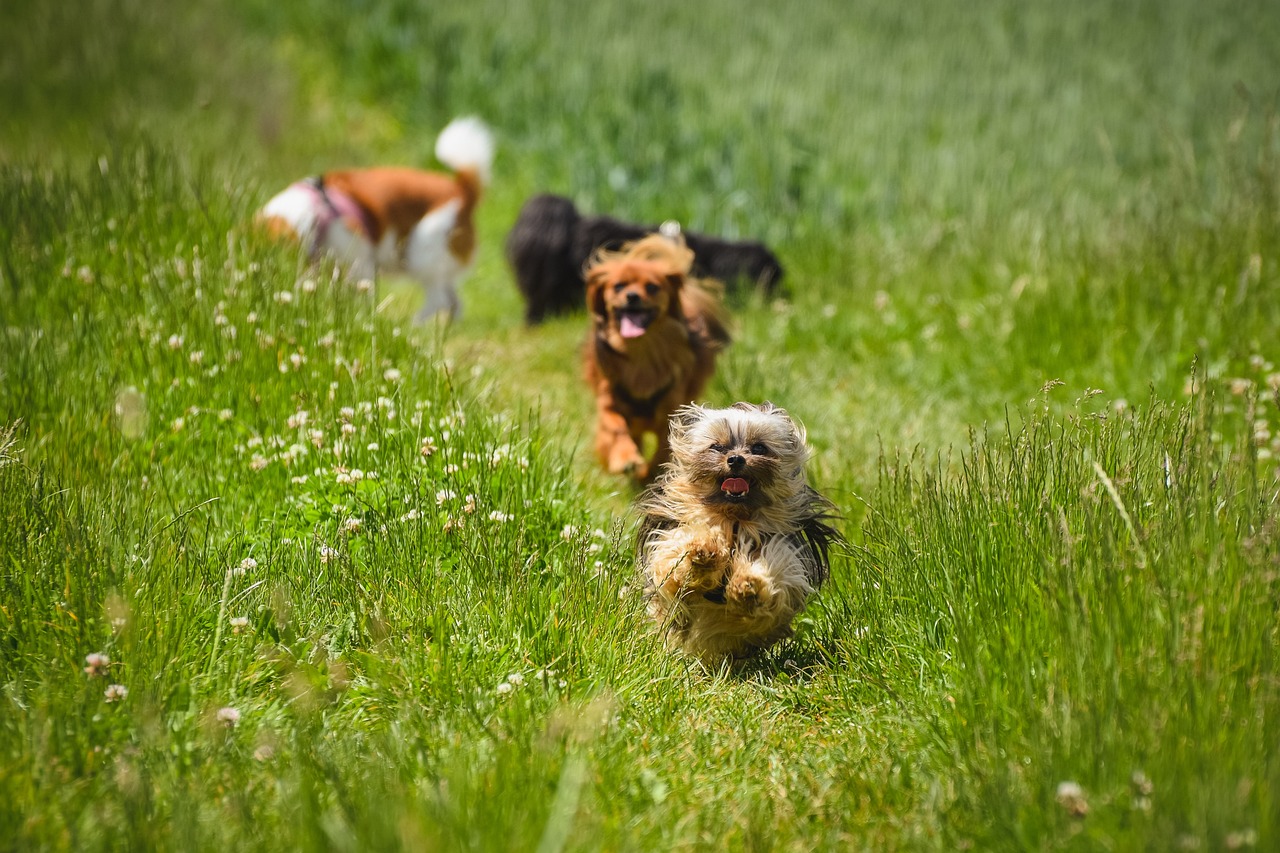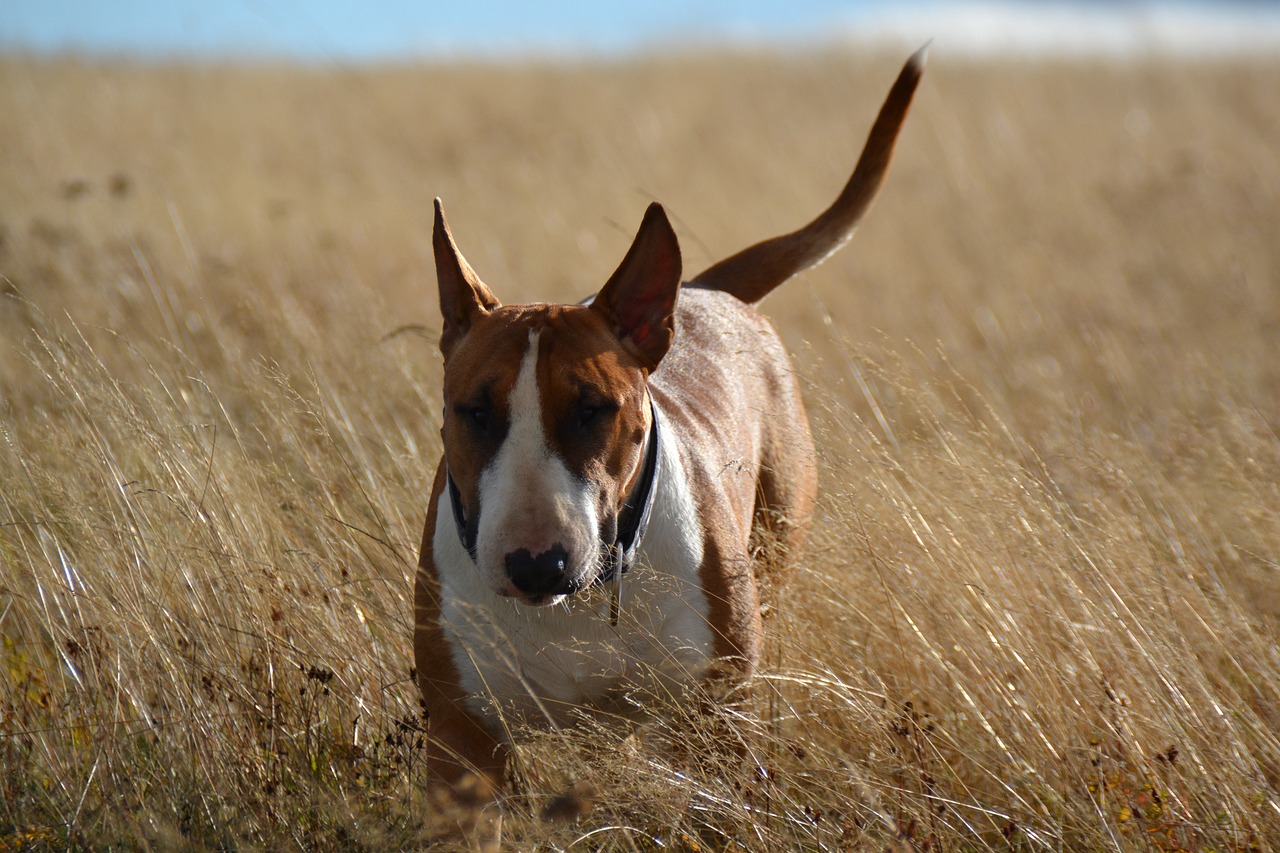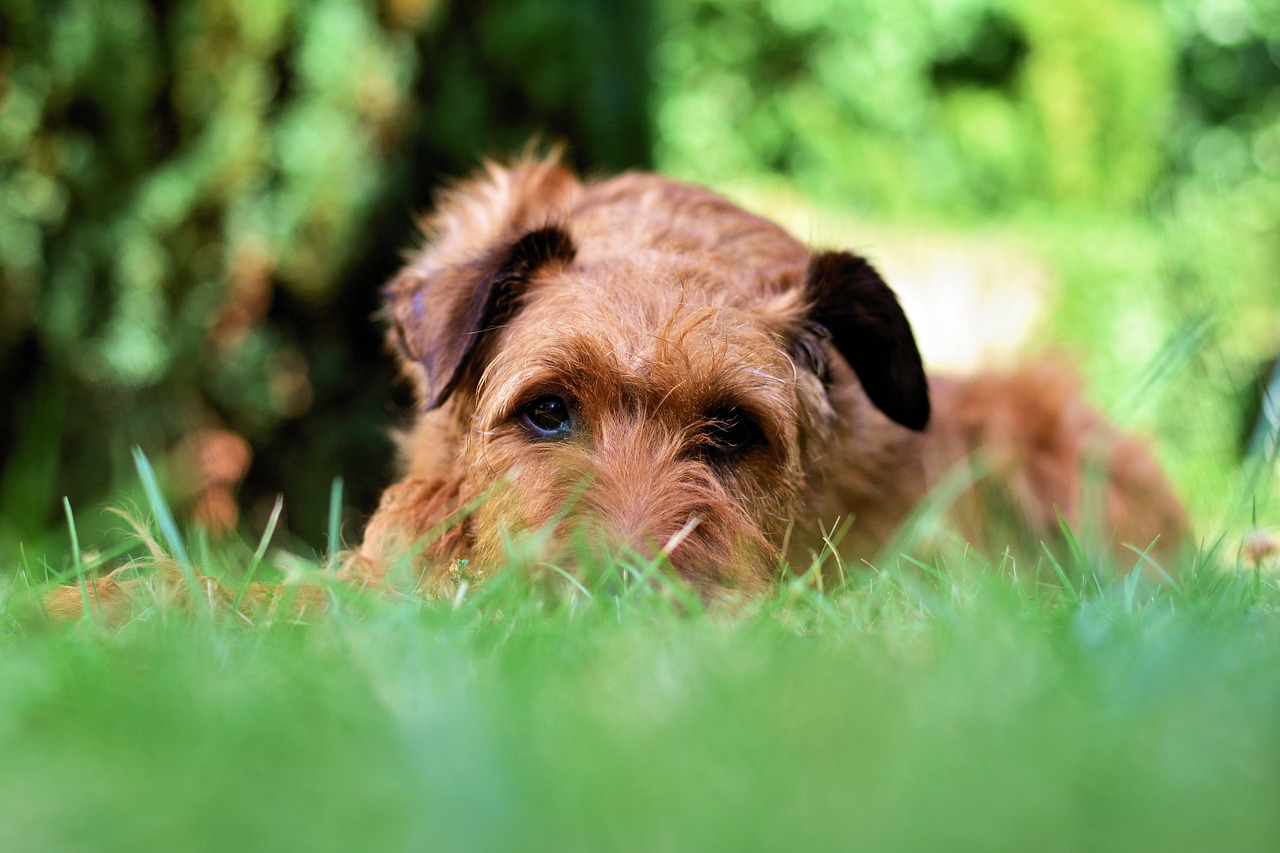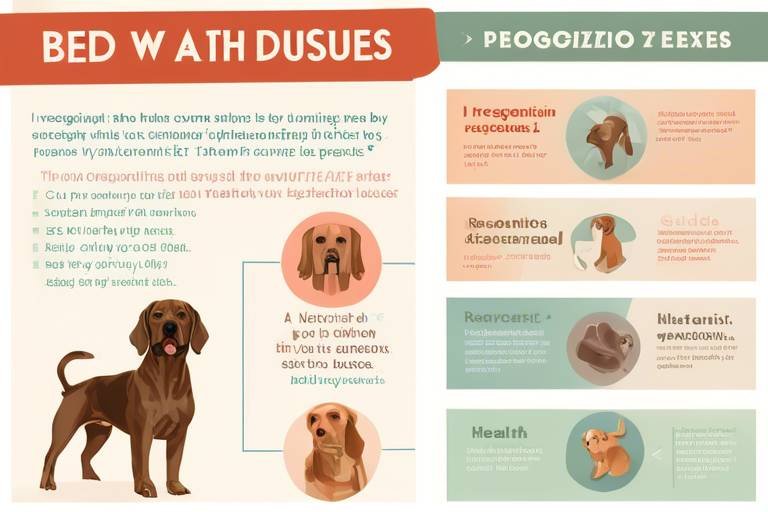The Playful Personality of the Tibetan Terrier
The Tibetan Terrier is not just a dog; it's a bundle of joy wrapped in fur! With their playful antics and charming demeanor, these dogs can light up any room and bring a smile to anyone's face. Imagine a small, fluffy cloud bouncing around your living room, wagging its tail and begging for attention—that's the essence of a Tibetan Terrier. Their playful nature is not just a trait; it's a lifestyle that embodies fun, love, and companionship.
Originating from the rugged terrains of Tibet, these delightful dogs were bred by monks and nomads, serving as both companions and guardians. Their history is rich and fascinating, filled with tales of loyalty and playful interactions. These dogs were not just pets; they were part of the family, often found frolicking around the monasteries or keeping watch over the herds. This historical bond with humans has shaped their personality, making them incredibly affectionate and eager to please.
One of the most captivating aspects of the Tibetan Terrier is its **playful temperament**. These dogs possess a zest for life that is contagious. Whether they are chasing after a ball, engaging in a game of tug-of-war, or simply running around the yard, their energy is boundless. It's as if every day is a new adventure waiting to unfold. They thrive on interaction, and their playful spirit can turn any mundane moment into a delightful experience.
What sets the Tibetan Terrier apart is not just their playful nature but also their intelligence and social disposition. They are quick learners, which makes training a rewarding experience. Imagine teaching your dog tricks while they bounce around in excitement, eager to show off their new skills. This combination of intelligence and playfulness means that Tibetan Terriers require mental stimulation to keep them happy. Engaging them in interactive games and puzzles can be a fantastic way to channel their energy positively.
Moreover, their playful personality makes them excellent companions for families. They have a natural affinity for children, often treating them as playmates. The bond between a Tibetan Terrier and a child can be incredibly special, filled with laughter and joy. However, it's essential to supervise their interactions to ensure a safe and enjoyable experience for both parties. Their protective instincts also shine through when they sense a need to watch over their little humans, adding an extra layer of security to their playful nature.
In summary, the Tibetan Terrier is more than just a playful pet; it's a joyful companion that brings warmth and happiness into homes. Their playful personality, combined with their intelligence and affectionate nature, makes them a perfect fit for families and individuals alike. So, if you're looking for a furry friend that embodies fun and love, look no further than the charming Tibetan Terrier!
- Are Tibetan Terriers good with children? Yes, they are known for their playful nature and protective instincts, making them great companions for kids.
- How much exercise do Tibetan Terriers need? They require regular exercise, including walks and playtime, to keep their energy levels in check.
- Do Tibetan Terriers shed a lot? They have a long, flowing coat that requires regular grooming, but they are considered low-shedding dogs.
- How do I train my Tibetan Terrier? Positive reinforcement techniques work best, using treats and praise to encourage good behavior.
- Can Tibetan Terriers live in apartments? Yes, they can adapt to apartment living as long as they receive enough exercise and mental stimulation.

Origins of the Tibetan Terrier
The Tibetan Terrier is a breed steeped in rich history, with roots tracing back to the majestic mountains of Tibet. These dogs were not just pets; they served a significant role as companions and guardians for Buddhist monks and nomadic herders. Imagine a time when the rugged landscapes of the Himalayas echoed with the howls of the wind, and amidst this, the Tibetan Terrier stood watch, loyal and vigilant. This breed was revered for its ability to navigate the harsh terrains and its keen instincts to protect those it loved.
Originally, Tibetan Terriers were known as "Holy Dogs of Tibet." They were bred in monasteries, where they were cherished for their gentle temperament and playful nature. Monks believed these dogs brought good luck and prosperity. They were often gifted to important individuals, symbolizing friendship and goodwill. The Tibetan Terrier’s role extended beyond companionship; they were also utilized to herd sheep and serve as watchdogs, showcasing their versatility and intelligence.
Despite their name, Tibetan Terriers are not terriers in the traditional sense. They were named by Westerners who mistakenly believed they belonged to the terrier family due to their size and lively spirit. In reality, they belong to an ancient breed known as the "Tibetan Dog," which has been around for centuries. It’s fascinating to think about how these dogs have traveled through time, from the remote monasteries of Tibet to modern homes around the world. Their journey reflects not only their adaptability but also the deep bond they form with humans.
In the early 20th century, Tibetan Terriers began to make their way to the West, thanks to explorers and dog enthusiasts who recognized their unique qualities. The breed was first brought to England in the 1920s, where it quickly gained popularity. Today, Tibetan Terriers are cherished family pets, known for their playful antics and affectionate nature. They have a knack for bringing joy to their families, making them a beloved addition to many households.
In summary, the origins of the Tibetan Terrier are a blend of history, culture, and companionship. From their roots in the monasteries of Tibet to their status as cherished family pets today, these dogs embody a spirit of loyalty and playfulness that continues to endear them to dog lovers everywhere. Isn’t it amazing how a breed can carry such a rich history and yet still bring so much joy in our modern lives?

Physical Characteristics
The Tibetan Terrier is a breed that captivates with its distinctive physical traits. Standing between 14 to 17 inches tall and weighing around 20 to 35 pounds, these dogs have a compact yet sturdy build. Their bodies are well-proportioned, showcasing a strong frame that speaks to their history as both companions and working dogs in the rugged terrains of Tibet. One of the most striking features of the Tibetan Terrier is its long, flowing coat, which can come in a variety of colors including black, white, brown, and combinations of these shades. This luxurious coat not only adds to their charm but also serves a practical purpose, providing insulation against the harsh Tibetan climate.
What truly sets the Tibetan Terrier apart is its expressive eyes, which can be dark brown or blue, often reflecting a playful and intelligent spirit. These eyes are framed by a distinctive fringe of hair that adds to their overall appeal. When you look into a Tibetan Terrier's eyes, you can almost see the joy and mischief bubbling beneath the surface, ready to spring into action at any moment. Their ears are another notable feature; they hang down and are covered in soft, silky hair, giving them an adorable, almost childlike appearance.
In addition to their coat and eyes, the Tibetan Terrier's tail is one of its defining characteristics. It is long and feathery, often curling over the back. This tail not only adds to their overall aesthetic but also serves as an indicator of their mood. A wagging tail signals excitement and happiness, while a low-hanging tail might indicate that they are feeling a bit shy or uncertain.
To keep a Tibetan Terrier looking its best, regular grooming is essential. Their coat requires consistent brushing to prevent matting and to maintain its beautiful luster. Given their playful nature, they love to romp around, which means they can get a bit dirty! Bathing them every few months, or as needed, will keep them fresh and clean. Overall, the Tibetan Terrier’s physical characteristics are a blend of beauty and functionality, making them not just a pretty face but also a resilient and capable companion.

Temperament and Behavior
The Tibetan Terrier is not just a dog; it’s a bundle of joy wrapped in a fluffy coat! Known for their playful and energetic temperament, these dogs thrive on interaction and engagement. Imagine having a furry friend that greets you with boundless enthusiasm every time you walk through the door! They have an innate ability to lift your spirits, making them a delightful companion for families, singles, and everyone in between. Tibetan Terriers are often described as affectionate, intelligent, and social, which makes them a hit in any household.
One of the most charming aspects of the Tibetan Terrier is their social nature. They love being around people and other pets, often forming strong bonds with their human families. This breed is known for its playful antics—think of them as the class clowns of the dog world. Whether it’s chasing after a ball, performing tricks, or simply cuddling on the couch, they have a knack for bringing smiles to everyone around them. Their playful spirit is not just entertaining; it also encourages an active lifestyle for their owners. Regular playtime and exercise are essential, as these dogs have a lot of energy to burn!
However, it’s important to note that their sociability comes with a need for proper socialization. Early exposure to various environments, people, and other animals is crucial for Tibetan Terriers. This practice helps them develop into well-adjusted adults. A well-socialized Tibetan Terrier is confident and friendly, while a lack of socialization can lead to shyness or wariness of strangers. Therefore, it’s recommended to introduce them to new experiences gradually and positively. Engaging in puppy classes or playdates can be a fun and effective way to achieve this.
When it comes to families, Tibetan Terriers are often seen as the perfect addition. Their playful nature makes them great companions for children. They have a natural instinct to protect, which means they can be quite watchful and alert when it comes to their little human siblings. Just picture a Tibetan Terrier joyfully playing fetch with your kids in the backyard or snuggling up for a nap after a long day of adventures. Their friendly demeanor and patience with children make them an ideal family pet.
But what about other pets? Tibetan Terriers generally get along well with other animals, including cats and dogs. Their friendly disposition allows them to adapt to multi-pet households with ease. However, like any breed, introductions should be handled carefully. It’s important to supervise initial interactions and provide a safe space for all pets involved. With a little patience and guidance, your Tibetan Terrier can become a loving member of a larger furry family.
Now, let’s talk about their intelligence. Tibetan Terriers are smart cookies, which can be both a blessing and a challenge. They thrive on mental stimulation and can quickly learn commands and tricks. However, their independent nature means they might not always be eager to follow commands, especially if they’re not motivated. Incorporating games and positive reinforcement into training sessions can make learning fun and effective. Think of it as a game of tug-of-war, where you’re both pulling in the same direction toward a common goal!
In summary, the Tibetan Terrier is a playful, social, and intelligent breed that brings joy and companionship to any home. With the right socialization, training, and love, they can become not just pets, but cherished family members.
- Are Tibetan Terriers good with children?
Yes, they are known for their playful spirit and protective instincts, making them great family pets. - How much exercise do Tibetan Terriers need?
They require regular exercise to burn off their energy, including daily walks and playtime. - Do Tibetan Terriers get along with other pets?
Generally, yes! With proper introductions, they can coexist happily with other animals. - What are common health issues in Tibetan Terriers?
Some health concerns include hip dysplasia and eye conditions, so regular vet check-ups are important.
Socialization Needs
When it comes to the of the Tibetan Terrier, it's essential to understand that this breed thrives on interaction. Imagine a little ball of fluff that just can't get enough of being around people and other animals. Tibetan Terriers are inherently social creatures, and their playful nature significantly benefits from early and consistent socialization. This process involves exposing them to a variety of environments, sounds, people, and other pets, which helps them develop into well-adjusted and confident adults.
Socialization should ideally begin when they are puppies, as this is a critical period for learning and adapting to new experiences. Think of it like introducing a child to the world for the first time; the more they see and experience, the more comfortable they become. For Tibetan Terriers, this means meeting different people, visiting various locations, and interacting with other dogs. It’s a chance for them to learn appropriate behaviors and responses in a variety of situations.
To effectively socialize your Tibetan Terrier, consider the following strategies:
- Play Dates: Arrange playdates with other friendly dogs. This not only helps them learn doggy etiquette but also satisfies their playful spirit.
- Public Outings: Take your pup to parks, pet-friendly stores, or even outdoor cafes. The more diverse the experiences, the better!
- Training Classes: Enroll them in obedience or agility classes. These classes are perfect for socialization while also teaching valuable skills.
- Positive Reinforcement: Always reward your Tibetan Terrier with treats and praise when they interact positively with new people or pets. This builds their confidence and encourages them to be friendly.
Socialization is not just a one-time event; it’s an ongoing journey. Regular exposure to different situations helps prevent behavioral issues that can arise from fear or anxiety. A well-socialized Tibetan Terrier is not only happier but also more adaptable to changes in their environment. Remember, a dog that is comfortable and confident in various settings is a joy to be around, making family outings and social gatherings much more enjoyable.
In addition to general socialization, it's important to pay attention to how your Tibetan Terrier interacts with specific groups, such as children and other pets. Their playful and affectionate nature often makes them a hit with kids, but proper introductions and supervision are key to fostering positive relationships. Similarly, if you have other pets, gradual introductions and monitoring their interactions can create a harmonious multi-pet household.
In summary, the socialization needs of a Tibetan Terrier are crucial for their development and happiness. By actively engaging them in various social situations, you’re not just raising a pet; you’re nurturing a well-rounded companion who brings joy and love into your life.
Interactions with Children
When it comes to family pets, the Tibetan Terrier stands out as a playful and affectionate companion, especially when interacting with children. These dogs are known for their vibrant energy and love for playtime, making them a perfect match for kids who enjoy an active lifestyle. Imagine a fluffy ball of joy racing around the yard, chasing after a frisbee or engaging in a game of tug-of-war with the little ones—this is the essence of a Tibetan Terrier's spirit!
One of the most endearing qualities of Tibetan Terriers is their gentle nature. They tend to be patient and tolerant, which is essential when children are involved. Kids can sometimes be a bit rough or unpredictable, but a well-socialized Tibetan Terrier will usually respond with a wagging tail and a playful bark rather than aggression. This makes them an ideal choice for families with children of various ages.
Moreover, Tibetan Terriers have a natural instinct to protect their family, including the children. They are known to be watchful and alert, often keeping an eye on the kids while they play. This protective behavior doesn't mean they are aggressive; rather, it enhances their role as a loving guardian. They seem to have an innate understanding of their role in the family, which helps foster a strong bond with the children.
However, it’s crucial to teach children how to interact with their furry friends respectfully. Here are some tips to ensure harmonious interactions:
- Always supervise playtime between your Tibetan Terrier and young children to prevent any accidental injuries.
- Teach children the importance of gentle petting and to avoid pulling on the dog's ears or tail.
- Encourage kids to engage in interactive play, like fetch or hide-and-seek, which can enhance their bond with the dog.
In conclusion, the interactions between Tibetan Terriers and children can be incredibly rewarding. With their playful demeanor, protective instincts, and gentle nature, they not only bring joy to families but also teach children valuable lessons about empathy and responsibility. If you’re considering adding a Tibetan Terrier to your family, rest assured that you’re welcoming a furry friend who will cherish every moment spent with your little ones!
Q: Are Tibetan Terriers good with young children?
A: Yes, Tibetan Terriers are known for their gentle and playful nature, making them great companions for children.
Q: How should I introduce my Tibetan Terrier to my children?
A: Always supervise initial interactions, and teach your children how to approach and play with the dog gently.
Q: Can Tibetan Terriers handle rough play?
A: While they are generally tolerant, it’s important to monitor playtime to ensure that both the dog and the children are safe and comfortable.
Q: Do Tibetan Terriers require special training when around children?
A: Basic obedience training is beneficial, and teaching your dog to be calm and gentle around kids is crucial for a harmonious relationship.
Compatibility with Other Pets
When it comes to the compatibility of Tibetan Terriers with other pets, you’ll find that these charming little dogs often have a heart as big as their playful spirit. Tibetan Terriers are known for their friendly and social nature, which generally allows them to get along well with a variety of animals. However, just like any other breed, their compatibility can depend on several factors, including early socialization, individual personality, and the dynamics of your household.
One of the key aspects of ensuring a harmonious multi-pet household is to introduce your Tibetan Terrier to other pets at a young age. Socialization is crucial; it helps them learn how to interact appropriately with different species. For instance, if you have cats or smaller animals, introducing them slowly and in a controlled environment can help your Tibetan Terrier understand boundaries and develop a sense of friendship rather than rivalry.
Moreover, Tibetan Terriers tend to have a playful demeanor, which can sometimes be misinterpreted by more reserved pets. Imagine your Tibetan Terrier as the enthusiastic party planner, always eager to invite everyone to join in the fun. This exuberance can be delightful but may overwhelm more timid animals. Therefore, monitoring their interactions is essential to ensure that everyone feels comfortable and safe.
To give you a clearer picture, here’s a quick overview of how Tibetan Terriers typically interact with different types of pets:
| Type of Pet | Compatibility | Tips for Introduction |
|---|---|---|
| Cats | Generally Good | Introduce gradually, supervise initial meetings. |
| Small Animals (e.g., hamsters, rabbits) | Caution Required | Keep them separated until trust is established. |
| Other Dogs | Highly Compatible | Socialize early, playdates are beneficial. |
It's also worth noting that Tibetan Terriers can exhibit a protective instinct, especially when it comes to their human family. This trait can sometimes extend to their interactions with other pets. They may feel the need to guard their territory or their loved ones, which could lead to territorial behavior if not managed properly. Therefore, it’s crucial to establish clear boundaries and rules for all pets in the household, ensuring that your Tibetan Terrier understands that sharing space and affection is part of being a family.
In conclusion, while Tibetan Terriers can be compatible with other pets, the success of these relationships largely hinges on proper socialization and gradual introductions. With a little patience and understanding, your Tibetan Terrier can thrive in a multi-pet home, turning your living space into a joyful hub of playful interactions and loving companionship.
- Are Tibetan Terriers good with cats? Yes, they can be good with cats if introduced properly and socialized from a young age.
- Can Tibetan Terriers live with small animals? Caution is advised; they may see small animals as prey unless properly trained.
- How do I introduce a Tibetan Terrier to another dog? Start with short, supervised meetings and gradually increase their interaction time.
Training and Intelligence
The Tibetan Terrier is not just a pretty face; it’s also a bundle of intelligence wrapped in a playful package. Training this delightful breed can be a rewarding experience, as they are eager to learn and often thrive on positive reinforcement. Imagine having a furry companion who not only loves to play but also enjoys showing off their skills! However, it's essential to approach training with patience and creativity, as Tibetan Terriers can sometimes exhibit a stubborn streak. Think of them as the class clowns of the dog world—always ready to entertain but occasionally distracted by their own playful antics.
One of the most effective ways to train a Tibetan Terrier is through engaging and fun activities that stimulate their minds. Incorporating games into training sessions can make the process enjoyable for both you and your pup. For instance, using toys that require problem-solving skills can keep their clever minds busy. You might want to consider the following strategies:
- Positive Reinforcement: Reward them with treats and praise when they successfully follow commands.
- Short Sessions: Keep training sessions brief, around 5 to 10 minutes, to maintain their focus.
- Variety is Key: Mix up commands and activities to prevent boredom and keep them engaged.
Socialization is another critical aspect of training for Tibetan Terriers. Early exposure to different people, environments, and other pets can help them develop into well-rounded adults. Think of socialization as a way to expand their world—just like how we learn and grow from new experiences. The more they encounter various situations, the more comfortable and confident they will become.
Moreover, Tibetan Terriers are known for their unique ability to read human emotions. They often pick up on cues from their owners, making them highly responsive during training. This emotional intelligence means you can build a strong bond with your dog while teaching them essential commands and tricks. Imagine teaching your Tibetan Terrier to fetch or roll over, only to have them respond with a wagging tail and a joyful bark as if saying, “Look at me! I’m a superstar!”
In summary, training a Tibetan Terrier can be a delightful journey filled with laughter and learning. With their intelligence and playful nature, they are more than capable of mastering commands and tricks. Just remember to keep it fun, be patient, and celebrate their successes, no matter how small. After all, every little achievement is a step towards a well-behaved and happy companion!
Q1: Are Tibetan Terriers easy to train?
A1: While they are intelligent and eager to please, Tibetan Terriers can be a bit stubborn. Using positive reinforcement and keeping training sessions fun can help make the process smoother.
Q2: How much exercise do Tibetan Terriers need?
A2: Tibetan Terriers are energetic dogs and require regular exercise. Daily walks and playtime are essential to keep them happy and healthy.
Q3: Can Tibetan Terriers be left alone for long periods?
A3: They thrive on human interaction and may become lonely if left alone for too long. It's best to ensure they have companionship or stimulating activities to keep them occupied.
Q4: How do I socialize my Tibetan Terrier?
A4: Introduce them to various people, environments, and pets from a young age. Positive experiences will help them become well-adjusted adults.

Health Considerations
The Tibetan Terrier is not just a bundle of joy and energy; it also comes with its own set of health considerations that every prospective owner should be aware of. While these dogs are generally healthy, like any breed, they can be prone to specific health issues. Understanding these potential problems can help you provide the best care for your furry friend and ensure they lead a long, happy life.
One of the most common health concerns for Tibetan Terriers is hip dysplasia. This genetic condition occurs when the hip joint doesn't fit properly into the hip socket, leading to arthritis and pain. Regular vet check-ups and maintaining a healthy weight can significantly mitigate this risk. Another issue to be aware of is eye problems, including cataracts and progressive retinal atrophy (PRA). These conditions can affect their vision and may require surgical intervention or special care as they age.
Additionally, Tibetan Terriers can experience skin issues, such as allergies or dermatitis. Their long, flowing coats can trap dirt and moisture, leading to skin irritations if not properly groomed. Regular grooming not only keeps their coat looking fabulous but also helps you spot any potential skin problems early on.
To keep your Tibetan Terrier in tip-top shape, consider the following health tips:
- Regular Vet Visits: Schedule annual check-ups to catch any health issues early.
- Balanced Diet: Feed them high-quality dog food that meets their nutritional needs.
- Exercise: Ensure they have daily exercise to maintain a healthy weight and energy levels.
- Grooming: Regularly groom their coat to prevent matting and skin issues.
By staying proactive about your Tibetan Terrier’s health, you can enjoy many years of companionship. Remember, a healthy dog is a happy dog, and your little friend will reward you with endless love and playful moments!
Q: What are the common health issues in Tibetan Terriers?
A: Common health issues include hip dysplasia, eye problems like cataracts, and skin allergies. Regular vet visits and proper care can help manage these conditions.
Q: How often should I take my Tibetan Terrier to the vet?
A: It's recommended to take your Tibetan Terrier for an annual check-up, but more frequent visits may be necessary if they show signs of health issues.
Q: What can I do to prevent health problems in my Tibetan Terrier?
A: Maintaining a balanced diet, ensuring regular exercise, and keeping up with grooming can help prevent many health problems.

Grooming Requirements
Grooming a Tibetan Terrier is not just a chore; it’s a delightful bonding experience that allows you to connect with your furry friend. These charming dogs boast a long, flowing coat that can be the envy of the dog park, but it does require regular maintenance to keep it looking its best. Imagine a beautiful waterfall cascading down the rocks—this is what their coat can resemble when well-groomed! However, neglecting their grooming needs can lead to tangles and mats that not only look unappealing but can also be uncomfortable for your pup.
First and foremost, brushing is essential. A Tibetan Terrier's coat should ideally be brushed at least two to three times a week. This helps to remove loose hair, dirt, and any potential tangles before they become a bigger issue. When brushing, consider using a slicker brush or a comb designed for long-haired breeds. Regular brushing not only keeps their coat healthy but also provides a perfect opportunity to check for any skin issues, parasites, or irritations that may need attention.
In addition to brushing, regular bathing is also important. You might think that a dog’s coat doesn’t need washing often, but Tibetan Terriers can benefit from a bath every 4 to 6 weeks. Use a gentle, dog-specific shampoo to avoid irritating their skin. After bathing, make sure to thoroughly dry their coat, as damp fur can lead to skin problems. Think of it as giving your dog a spa day—who wouldn’t love that?
Another critical aspect of grooming is nail trimming. Keeping your Tibetan Terrier's nails short is vital for their comfort and health. Long nails can cause pain and lead to walking issues. Aim to trim their nails every 3 to 4 weeks, or whenever you hear them clicking on the floor. If you’re unsure about how to trim their nails, a professional groomer can show you the ropes.
Furthermore, don’t forget about their ears and teeth! Regularly check their ears for dirt and wax buildup, and clean them gently with a vet-recommended solution. Dental care is equally important; brushing their teeth a few times a week can prevent dental diseases and keep their breath fresh. Imagine how lovely it would be to cuddle with your pup without the worry of bad breath!
Lastly, if you’re considering taking on the grooming responsibilities yourself, remember it’s not just about the tools; it’s about the technique. If you’re feeling overwhelmed, hiring a professional groomer might be the best option. They can help maintain your Tibetan Terrier’s coat while teaching you some grooming basics. After all, a well-groomed dog is a happy dog!
- How often should I groom my Tibetan Terrier? Ideally, you should brush them 2-3 times a week and bathe them every 4-6 weeks.
- Can I groom my Tibetan Terrier at home? Yes, with the right tools and techniques, you can groom them at home, but consider professional help if you're unsure.
- What tools do I need for grooming? A slicker brush, comb, dog shampoo, nail clippers, and ear cleaning solution are essential.
- Are there any specific health issues to watch for while grooming? Yes, keep an eye out for skin irritations, mats, or ear infections during grooming sessions.

Finding a Tibetan Terrier
When it comes to adding a Tibetan Terrier to your family, the journey can be as exciting as it is important. These charming dogs are not just pets; they are companions that bring joy and laughter into your home. But how do you find the perfect Tibetan Terrier that fits your lifestyle? Whether you're considering adoption or looking for a reputable breeder, there are several factors to keep in mind.
First and foremost, it's essential to understand that Tibetan Terriers are not widely available in every corner of the country. They are a relatively rare breed, which means you might need to do a bit of digging. Start by checking local shelters and rescue organizations. Many dogs, including Tibetan Terriers, end up in shelters and are in desperate need of loving homes. Adopting a dog not only saves a life but also gives you a loyal friend.
If you're leaning towards adoption, reach out to breed-specific rescue groups. These organizations often have a network of foster homes that can help you find a Tibetan Terrier that matches your needs. They can provide valuable insights into the dog's personality, health, and any special requirements, ensuring a good fit for your family. Remember, adopting a dog is a commitment, and understanding their background can make all the difference.
On the other hand, if you prefer to buy from a breeder, it's crucial to do your homework. Look for reputable breeders who prioritize the health and temperament of their dogs. A good breeder will be transparent about the dog's lineage and health history. They will also be willing to answer any questions you have and may even require you to fill out an application to ensure that you are a good match for their puppies. Here are some tips for finding a responsible breeder:
- Check for breed clubs and associations that list reputable breeders.
- Visit the breeder's facility to see the living conditions of the dogs.
- Ask for health clearances and documentation on the puppy's lineage.
- Inquire about socialization practices and how the puppies are raised.
Regardless of whether you choose to adopt or buy, it's essential to consider your lifestyle. Tibetan Terriers thrive in active households where they can receive plenty of attention and exercise. They are known for their playful nature, so be prepared to engage in games and activities that stimulate both their mind and body. Think about your daily routine and how a Tibetan Terrier might fit into it. Are you home often? Do you have children? Do you have other pets? These factors can help you determine if a Tibetan Terrier is the right breed for you.
Lastly, remember that bringing a Tibetan Terrier into your home is just the beginning. You'll need to invest time in training, socialization, and grooming to ensure a happy and healthy life for your new furry friend. By taking the time to find the right match, you're setting the stage for a beautiful relationship filled with love, loyalty, and, of course, plenty of playful moments.
| Question | Answer |
|---|---|
| Are Tibetan Terriers hypoallergenic? | Yes, Tibetan Terriers are considered hypoallergenic, making them suitable for allergy sufferers. |
| How much exercise do Tibetan Terriers need? | They require daily exercise, including walks and playtime, to keep them healthy and happy. |
| Do Tibetan Terriers get along with other pets? | Yes, with proper socialization, Tibetan Terriers can coexist peacefully with other pets. |
| What is the average lifespan of a Tibetan Terrier? | The average lifespan is around 12 to 15 years. |
Frequently Asked Questions
- What is the temperament of a Tibetan Terrier?
The Tibetan Terrier is known for its playful and energetic temperament. These dogs are incredibly social and thrive on human interaction. They are affectionate, loyal, and often exhibit a delightful sense of humor, making them wonderful companions for families and individuals alike.
- How do Tibetan Terriers interact with children?
Tibetan Terriers are great with children! Their playful spirit and protective instincts make them excellent family pets. They enjoy playing games and are generally gentle, which helps them bond well with kids, creating a fun and loving environment.
- Are Tibetan Terriers good with other pets?
Yes, Tibetan Terriers can get along well with other pets, especially if they are socialized from a young age. It's important to introduce them gradually and supervise their interactions to foster a harmonious multi-pet household. With the right approach, they can become great companions for other animals.
- What are the grooming needs of a Tibetan Terrier?
Tibetan Terriers have a long, flowing coat that requires regular grooming to prevent matting. Brushing several times a week is recommended, along with occasional baths to keep their coat clean and healthy. Regular grooming not only keeps them looking their best but also strengthens the bond between you and your furry friend.
- What health issues should I be aware of with Tibetan Terriers?
Tibetan Terriers are generally healthy, but like all breeds, they can be prone to certain health issues. Common concerns include hip dysplasia, eye problems, and skin conditions. Regular vet check-ups and a balanced diet can help maintain their health and ensure they live a happy, active life.
- How can I find a Tibetan Terrier?
You can find a Tibetan Terrier through adoption centers or reputable breeders. It's essential to research and ensure that the breeder prioritizes health and temperament in their breeding practices. Adopting from a shelter is also a wonderful way to give a dog a second chance at a loving home.
- What training methods work best for Tibetan Terriers?
Tibetan Terriers are intelligent and eager to please, making them relatively easy to train. Positive reinforcement methods, such as treats and praise, work wonders. Keeping training sessions fun and engaging will help maintain their interest and encourage good behavior.



















